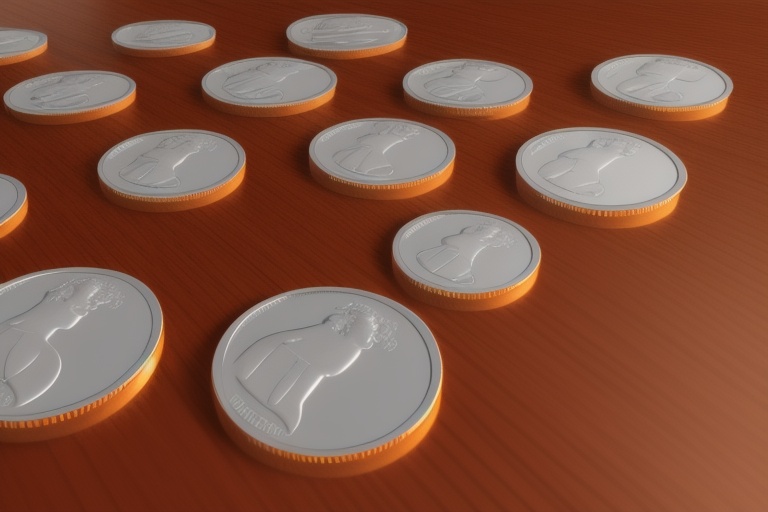Coin collecting is an endeavor that marries the thrill of a treasure hunt with the appreciation of history and artistry. While some may view coins solely as a medium of exchange, the informed collector understands that each piece can narrate a chapter of the past or hold a rarity that transcends its face value. In the realm of numismatics, Small Cents—pennies, as they are widely known—offer an accessible entry point for enthusiasts and serve as a cornerstone for building an impressive collection. In this article, we will guide you through the world of collecting pennies, detailing their values and what makes certain cents from specific years and mint marks worthy of your attention.
Coin collecting is an endeavor that marries the thrill of a treasure hunt with the appreciation of history and artistry. While some may view coins solely as a medium of exchange, the informed collector understands that each piece can narrate a chapter of the past or hold a rarity that transcends its face value. In the realm of numismatics, Small Cents—pennies, as they are widely known—offer an accessible entry point for enthusiasts and serve as a cornerstone for building an impressive collection. In this article, we will guide you through the world of collecting pennies, detailing their values and what makes certain cents from specific years and mint marks worthy of your attention.
The Value of the 1945 Penny
The 1945 Lincoln Wheat Penny is an example of a coin rich in history and available in abundance. A standard-grade 1945 penny typically is valued at around $1 to $2. However, a 1945 Penny exhibiting a Doubled Die Reverse, a fascinating error caused during the minting process, sees its value leap to between $10 and $15. Collectors prize such anomalies, recognizing the rarity and storytelling potential they represent.
Discovering the Pennies of 1946
Diving deeper into post-war coinage, the 1946 P Penny emerges, with a modest face value between $0.20 to $0.25. The Denver-minted 1946 D Penny attracts slightly more interest, commanding a face value of $0.30 to $0.40. The San Francisco version, the 1946 S Penny, sits comfortably in that same pricing environment, ranging from $0.35 to $0.40.
The Post-War Era: 1947 and Beyond
Looking at the year 1947, the narrative remains consistent. The 1947 P Penny sustains a face value akin to the previous year, at about $0.20 to $0.25. The Denver mint contributed the 1947 D Penny, garnering $0.25 to $0.30 on average. Meanwhile, the 1947 S Penny claims a comparable value range to its Denver counterpart, spanning $0.35 to $0.40.
The Nuances of 1948 and 1949
The transition toward the late 1940s presents coins with face values that align with their denominations, as in the cases of the 1948 P and D Pennies. Nonetheless, these coins carry potential numismatic value, especially in better-than-average conditions. In comparison, the 1949 D Penny may intrigue collectors more, particularly with the occurrence of the D over S mint mark error, adding an element of both fascination and value. The 1949 S Penny tends to mirror the financial expectations set in previous years.
Entering the Fifties
As we traverse through the early 1950s, pennies from 1950 to 1953 largely uphold face value. But it is essential to consider both the scarcity and the condition of these coins, which can significantly impact their worth. The 1950s were an era of relative stability in penny production, rendering most issues from these years common in circulated condition.
1954: A Year of Minting Missteps
1954 introduces a compelling piece of numismatic interest: the 1954 S Penny with the S over D mint mark. Mistakes like this capture the imagination of collectors, often fetching premium prices.
The Key Years of 1955 to 1960
As we approach the apex of the ‘50s, coins continue to hold their face value but noteworthy examples emerge. The 1954 and 1955 D Pennies with the D over S mint mark can claim higher prices, considering their uncommon characteristics. Moving toward the latter part of the decade, coinage from 1956 to 1958 remains faithful to its face value auction, but again, the state of preservation can alter their desirability. In 1959, a new penny design was introduced, ending the Wheat Penny series and making the late '50s coins the final issues of their kind. This change adds a special interest for collectors focusing on end-of-series pieces.
By the time we reach 1960, we are at a pivotal point in penny history. The year marked the transition from the predominantly wheat reverse pennies to the more modern Lincoln Memorial pennies, launched in 1959. Coins from the initial year of a series often hold additional allure, reflecting a fresh chapter for these everyday American icons.
Insights and Advice
Collectors should remember that while face value offers a baseline, scarcity, condition (including grading from authorities like PCGS or NGC), and market demand ultimately determine the true value of a coin. The market is dynamic, and values fluctuate with economic factors and collector interests. Regular research, attention to auctions, and discourse with other collectors will ensure that one's knowledge and collection remain strong and vibrant.
Whether you're embarking on the journey of coin collecting or you're looking to expand your existing portfolio, understanding the intricacies of coin valuation and the historical context of coins is key. The pennies discussed represent only a fraction of the larger numismatic picture, with countless coins from different years and mint marks waiting to be discovered and cherished. Stay curious, actively learn, and enjoy the rich tapestry of coin collecting.
Information for this article was gathered from the following source.


